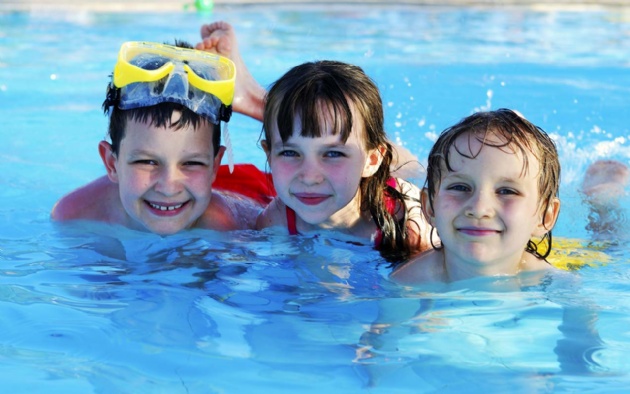Did you know
that the second leading cause of death in children ages one to four is
drowning?
Securing your backyard pool and teaching children about water safety
can help protect them from serious injury, and even death.
Swimming safety
Here are some
tips on how to help keep your kids safe when playing in water--whether a
swimming pool, lake, or ocean.
- Make sure
young children are always wearing a lifejacket or personal floatation
device when playing in or around water. Learn how to
find the right flotation device for your child.
- Enroll your
child in a water safety
and swimming program, and sign yourself up to learn basic
lifesaving skills.
- Secure your
backyard swimming pool.
- Make sure
there is always adult supervision when children are playing in or around
water.
- Keep young
children within arm's reach at all times.
- Choose a
safe place to swim, such as a supervised beach or swimming pool. In public
swimming spots, check for hazards before wading in--including information
about water pollution levels.
- Be aware
of water risks in spring, when ice gets dangerously thin and winter
run-offs create strong currents in ditches, creeks, and rivers. Warn
children of the dangers and supervise their play.
Every year, children of all ages drown in backyard swimming pools. In fact, backyard swimming pools are where children ages 1 to 4 are most likely to drown. Kids are at an increased risk of drowning because they are drawn to water, they move quickly, and they can drown in as little as one inch of water.
Many swimming pool drowning incidents occur because access to the pool--or the pool itself--has not been secured. Children can easily gain access to backyard pools when;
- the pool
is not fenced in all the way around
- the gate
to the backyard is not shut or locked
- the patio
door or garage door that opens into the backyard isn't locked
- Build a
fence around your pool that is at least 1.2 metres high. Check with your
town or city to find out the rules for building a pool fence.
- Install a
gate that is self-closing with a latch that is beyond your child's reach.
Keep the gate locked at all times.
- Keep a
safety cover on your pool when it is not in use.
- Teach
children about water
safety and enroll them in swimming lessons.
- Keep
lifesaving equipment (such as a safety ring with a rope) and a first aid
kit near the pool.
- Keep
emergency phone numbers by the telephone closest to the pool.
- Keep toys,
garden furniture, and tools away from the pool fence. Children can climb
up on these items to get over the fence and into the pool.
- Leaving
toys in or around the pool could tempt children to retrieve them. Be sure
to remove all toys from the pool after playtime.
Water and sand reflect the sun's harmful UV rays, which can lead to children burning within minutes. Make sure your child is always wearing a hat and plenty of sunscreen.

 In The Latest Issue:
In The Latest Issue:



 BY:
BY: 

Tweet
Share